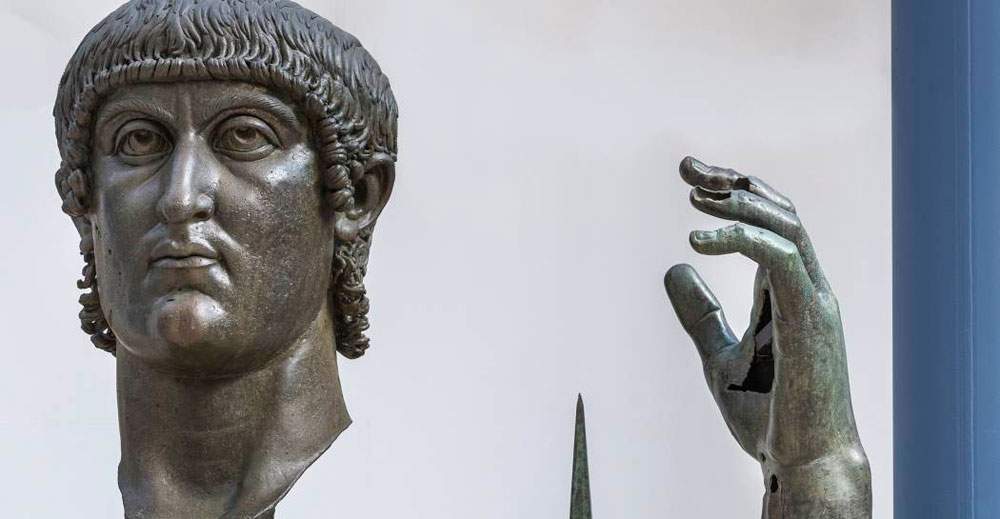Arriving at the Capitoline Museums from the Louvre is the fragment of the bronze finger that completes the hand of the colossus of Constantine: thanks to a collaboration between Roma Culture, the Capitoline Cultural Heritage Superintendency and the Louvre Museum, visitors can see the bronze hand displayed in the Exedra of Marcus Aurelius reassembled. The fragment coincides with the upper two phalanges of an index finger. This reassembly comes on the occasion of the 550th anniversary of the Sistine donation, but also nearly 500 years after their separation.
The fragment arrived in Paris in 1860 along with much of the collection of Marquis Giampietro Campana, among the leading figures in Roman collecting in the 19th century. Only recently has it been possible to recognize that the fragment belongs to the bronze colossus of Constantine, whose head, left hand, with gaps at the index, middle, ring and palm fingers, and a sphere once supported by the hand remain in the Capitoline Museums. The discovery in fact came in 2018 thanks to a test made in Rome with a 3D model of the Louvre fragment, following an operation coordinated by Françoise Gaultier and Claudio Parisi Presicce. A fiberglass cast of the missing fragment was subsequently made and then the original hand, completed with the missing phalanges, was presented on the occasion of the two major exhibitions dedicated to the Campana collection: Un rêve d’Italie. La collection du marquis Campana, at the Louvre Museum, and A Dream of Italy. The Marquis Campana Collection, at the Hermitage in St. Petersburg.
The last attestation of the integrity of the hand is documented by sources dated by the late 1630s. Slightly later graphic evidence shows the colossal hand separated from the sphere and with the index finger already missing the upper two phalanges. The fragment now in the Louvre, therefore, may have entered the Roman antiquarian market circuit already at this very early stage. Nothing is known about the fragment until its disappearance in the first half of the 19th century in the collection of Marquis Campana. Further study may perhaps clarify the fragment’s fortunes during this time period.
Ph.Credit Zeno Colantoni
 |
| Capitoline Museums reassembled Constantine's hand: fragment arrives from Louvre |
Warning: the translation into English of the original Italian article was created using automatic tools. We undertake to review all articles, but we do not guarantee the total absence of inaccuracies in the translation due to the program. You can find the original by clicking on the ITA button. If you find any mistake,please contact us.